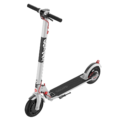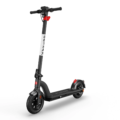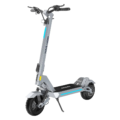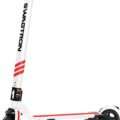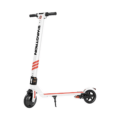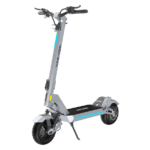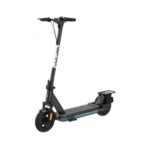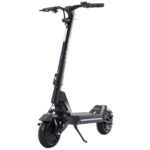- Home
- Scooters
- Electric Scooters
- Gotrax G Max Ultra
Gotrax G Max Ultra
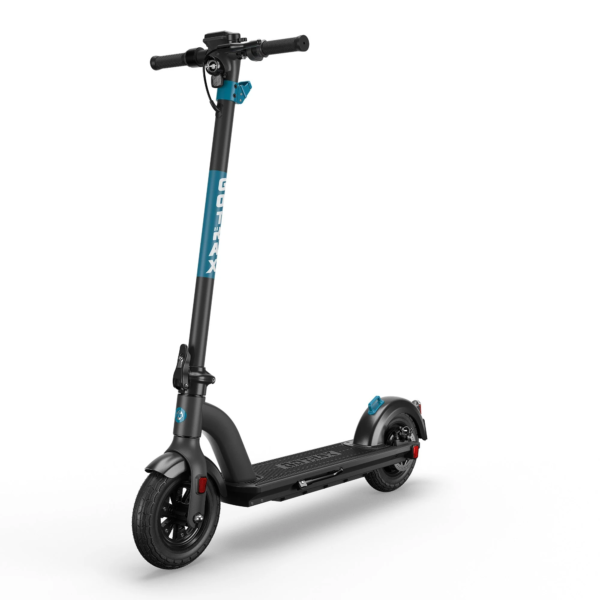

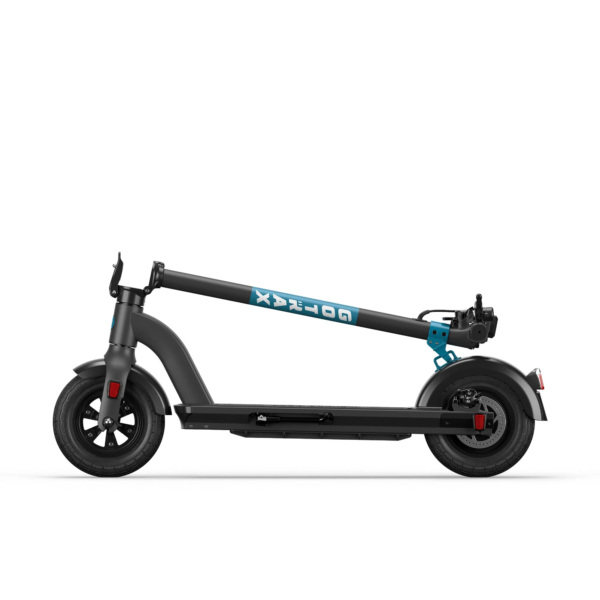

- Battery Range: 45 miles (72 km)
- Top Speed: 32 km/h (20 mph)
- Motor Power: 350 W rated
- Weight Capacity: 220 lb (100 kg)
- Charging Time: ~6 hours
- Scooter Weight & Portability: ~19 kg (41.9 lb)
PROS
- Long real-world range (27–35 miles)
- Comfortable 10″ pneumatic tires
- Built-in digital code lock for theft protection
- Solid aluminum build with IP54 resistance
- Cruise control and ride modes included
CONS
- Heavy at 19 kg, less portable than smaller Gotrax models
- No suspension, rough roads are still noticeable
- Charging takes up to 6 hours
- Smart app features are limited
- Slightly higher price than mid-tier Gotrax models

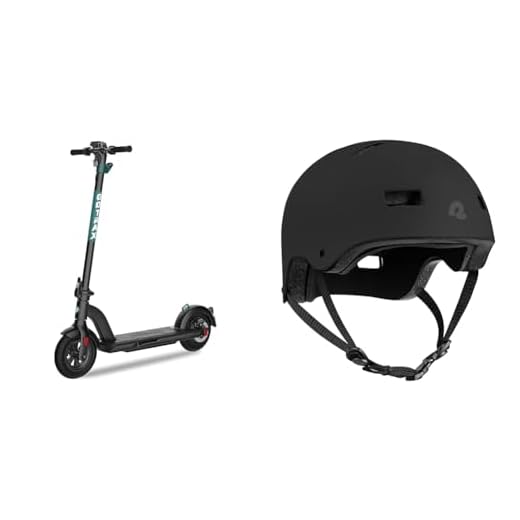
Gotrax G Max Ultra Overview
Introduction: A True Long-Range Commuter Scooter
The Gotrax G Max Ultra has held a top position in Gotrax’s commuter scooter lineup since its release in 2021. It wasn’t just a small step up from earlier models like the G4 or XR Elite—it was a leap into the premium commuter category. Designed with range, comfort, and durability as its core strengths, the G Max Ultra has earned a reputation as a practical alternative to cars and public transport for many riders.
At the heart of the scooter is its 630 Wh lithium-ion battery, which promises a massive 45-mile (72 km) range under ideal conditions. In real-world scenarios, riders can expect closer to 27–35 miles (43–56 km), which is still far more than most budget or mid-tier scooters. This level of endurance allows riders to travel farther and worry less about charging, a feature that sets it apart in the Gotrax family.
Paired with 10-inch pneumatic tires, a 350 W rear-wheel motor, and safety-focused features like dual braking and a built-in digital lock, the G Max Ultra delivers a commuter-friendly blend of power and dependability. While it’s heavier than smaller Gotrax models, the added weight translates into a scooter that feels sturdy and confidence-inspiring.
In this extended overview, we’ll explore the G Max Ultra’s performance, comfort, safety, durability, and overall value. We’ll also compare it against other Gotrax scooters, highlight its best use cases, and discuss where it fits in the growing electric scooter market.
Motor Power and Performance: Smooth, Steady, and Dependable
The 350 W rear hub motor may not sound overwhelming on paper, especially when compared to the high-wattage motors of performance scooters, but in practice, it’s more than capable of handling daily commutes. With a peak output of around 500 W, the motor provides enough torque to confidently pull away from traffic lights and navigate moderate inclines.
The top speed of 20 mph (32 km/h) strikes a balance between excitement and control. Many riders find that this speed is perfect for urban environments. It’s fast enough to keep pace in bike lanes and on shared-use paths, but not so fast that it feels unsafe for beginners. In fact, for city commuters, a capped top speed often feels more useful than raw speed since it aligns with traffic flow and regulations.
Acceleration is predictable and smooth rather than aggressive. Beginners can step onto the G Max Ultra and feel comfortable within minutes. Experienced riders, on the other hand, will appreciate the steady pull that makes the scooter easy to control in stop-and-go traffic.
On inclines up to 15°, the scooter manages without serious struggle, though speed will naturally dip depending on rider weight. For reference, lighter Gotrax scooters such as the XR Plus or GXL V2 often slow down significantly on hills, so the G Max Ultra offers a clear improvement.
Riding Modes and Everyday Flexibility
To suit different commuting needs, the G Max Ultra includes three riding modes:
- Eco Mode — Keeps the scooter at a slower pace while extending battery life. Ideal for beginners or for riding in crowded pedestrian areas.
- Standard Mode — Provides a balanced mix of speed and efficiency, suitable for most urban commutes.
- Sport Mode — Unlocks the scooter’s full 20 mph top speed, making it perfect for open bike lanes and longer rides.
Switching between these modes is quick and intuitive, allowing riders to adapt instantly to their environment. For example, you might use Eco Mode to carefully roll through a crowded plaza, then switch to Sport Mode when you reach a clear bike lane.
This adaptability makes the G Max Ultra not just a long-range scooter but also a versatile commuter that can handle a wide variety of real-world conditions.
Battery and Range: Endurance That Outpaces the Competition
One of the G Max Ultra’s biggest advantages is its 630 Wh battery, which is significantly larger than what you’ll find in budget scooters. This allows the scooter to achieve a claimed range of 45 miles, though real-world conditions bring that down to 27–35 miles depending on rider weight, terrain, and mode selection.
For many commuters, this endurance is a game-changer. If your round-trip commute is 10 miles, you can go almost a full workweek without recharging. Even heavier riders in Sport Mode can comfortably cover 20+ miles, which is more than enough for most city trips.
Charging takes about 6 hours, which may seem long, but the payoff is fewer charging cycles. Riders typically charge overnight or plug in at work, making the wait less of an issue. In fact, the balance between range and charge time is one of the reasons the G Max Ultra feels so practical for daily use.
The Smart Battery Management System (BMS) monitors the pack’s health, preventing overheating, overcharging, and voltage drops. This adds both safety and long-term reliability, ensuring the scooter remains dependable after years of use.
Ride Comfort: Stability Without Suspension
Unlike high-end performance scooters, the G Max Ultra does not include a suspension system. Instead, it relies on 10-inch pneumatic tires to provide cushioning against road imperfections. The larger wheel size compared to 8.5-inch scooters makes a noticeable difference when rolling over cracks, potholes, and uneven pavement.
The tires also provide more contact with the road, giving the scooter better traction and handling. This is especially useful when riding in damp conditions or on uneven bike paths.
The 6.7-inch-wide deck adds another layer of comfort. Riders can stand with feet side-by-side or shift positions during longer rides, which helps reduce fatigue. The anti-slip finish ensures solid grip even if the deck gets wet.
While the lack of suspension means you’ll still feel rougher surfaces, the combination of pneumatic tires, deck space, and weight distribution makes the G Max Ultra stable and confidence-inspiring. For city commuting, this setup works well.
Safety and Braking System
The G Max Ultra is built with safety as a priority. It uses a dual braking system that pairs a front regenerative brake with a rear mechanical disc brake. This combination allows for flexible braking depending on the situation:
- Use the regen brake for gradual deceleration and to recover a bit of battery power.
- Apply the disc brake when you need quick, strong stopping power.
The braking feel is smooth and predictable, giving riders confidence even in sudden stops.
Lighting is also well-designed. The front LED headlight illuminates paths clearly, while the rear brake light activates when slowing down. Reflectors on the sides increase visibility to cars and cyclists at intersections. For riders who often travel at dawn, dusk, or night, these features are essential.
Portability vs. Weight
One area where the G Max Ultra makes a trade-off is portability. At 19 kg (41.9 lb), it’s heavier than smaller Gotrax models. Carrying it upstairs or onto public transport can be a challenge.
However, the folding latch system makes collapsing the scooter straightforward, and once folded, the frame is compact enough to fit in car trunks or be stored under desks. Riders who value range and durability usually accept the extra weight as a fair trade.
For context:
- Gotrax GXL V2 weighs just 12.3 kg, making it far easier to carry, but with less than half the range.
- XR Elite weighs 14 kg and offers decent portability with moderate range.
- G Max Ultra sacrifices portability for serious endurance and comfort.
Anti-Theft Features and Smart Extras
The G Max Ultra includes a built-in digital code lock, which is rare among scooters in this price range. This feature adds peace of mind when parking outside shops or offices for short stops. While it doesn’t replace a heavy-duty lock for high-risk areas, it does prevent casual theft attempts.
The scooter also supports Gotrax app connectivity. While not as advanced as premium apps from Segway or NIU, it allows riders to check ride stats, lock the motor, and access basic diagnostic information.
The cruise control feature is another useful extra. By holding the throttle for a few seconds, riders can maintain a steady speed without keeping pressure on the lever, reducing fatigue during long rides.
Build Quality and Durability
Gotrax builds the G Max Ultra with a reinforced aluminum alloy frame. The scooter feels solid underfoot, with minimal flex in the stem or deck. This sturdiness contributes to its durability for daily use.
The scooter is rated IP54 water-resistant, meaning it can handle splashes, puddles, and light rain. Riders should still avoid heavy downpours, but the rating ensures reliability in typical urban weather.
Over time, most maintenance will involve keeping the tires inflated, adjusting the brakes, and charging the battery properly. With these habits, the G Max Ultra can provide years of dependable service.
Comparisons Within the Gotrax Lineup
To fully understand the G Max Ultra, it helps to compare it against other Gotrax scooters:
- GXL V2 — Budget-friendly and ultra-lightweight but with very limited range.
- XR Ultra — Adds better battery cells, but still designed for short commutes.
- XR Elite — Offers a balance of comfort and range, though much shorter than the G Max Ultra.
- G4 — Includes higher top speed and good range but falls short of the G Max Ultra’s endurance.
- G Max Ultra — Flagship scooter focused on long range, stability, and commuting reliability.
When range is your priority, no other Gotrax scooter matches the G Max Ultra.
Who Should Choose the Gotrax G Max Ultra?
This scooter is ideal for riders who:
- Commute 10–20 miles daily and want fewer charging cycles.
- Need a scooter for longer weekend rides or suburban exploring.
- Prefer stability and comfort over extreme portability.
- Value the built-in lock and solid build quality.
- Want a scooter that can serve as a car replacement for short urban trips.
It may not be the right pick for those living in walk-up apartments who must carry their scooter frequently. In such cases, a lighter model like the XR Elite or Xiaomi 4 Pro may be more practical.
Real-World Scenarios
To illustrate its usefulness, let’s consider some rider profiles:
- City Commuter: Travels 8 miles each way to work, five days a week. With the G Max Ultra, they only need to charge every two to three days.
- Student: Lives off-campus and rides 5 miles daily. The scooter handles several days of classes before needing a charge, and the built-in lock adds security for short stops.
- Weekend Explorer: Uses the scooter for leisure rides on park trails and city paths. The extended range makes day trips possible without range anxiety.
These scenarios show how versatile the G Max Ultra is when range is a top priority.
Final Verdict: A Smart Investment for Long-Distance Riders
The Gotrax G Max Ultra is the kind of scooter that makes daily commuting practical and stress-free. With its 45-mile claimed range, real-world reliability, 10-inch pneumatic tires, and digital lock, it provides value that few other scooters in its class can match.
It’s heavier than smaller Gotrax models, and it lacks suspension, but those trade-offs are minor when you consider its comfort, safety, and endurance. For riders who want a dependable scooter for daily urban commuting or weekend exploration, the G Max Ultra continues to be one of the best investments in 2025.
Specifications
General
| Model The Model specifies the exact version or name of the scooter. It helps identify its unique design, features, and specifications within the manufacturer’s product line. Knowing the model makes it easier to compare options, find compatible accessories, or look up support information. | G Max Ultra |
| Brand The Brand identifies the manufacturer or company that designs and produces the scooter. A trusted brand is a sign of quality, reliability, and good customer support. Well-known brands often have higher standards for safety, performance, and after-sales service, giving you more confidence in your purchase. | Gotrax |
| Release Date The Release Date indicates when the scooter model was officially launched on the market. This helps you know how current the design, technology, and features are. A newer release date often means updated components, improved performance, and the latest safety or smart features. | 01 May 2021 |
| Recommended Age Recommended Age indicates the minimum age range that the scooter is designed for, based on safety, size, and ease of use. Following the recommended age helps ensure that riders can handle the scooter’s speed, weight, and controls comfortably and safely. Always check local laws and use protective gear, especially for younger riders. | 16+ years |
Performance & Power
| Motor Power (Wattage) What it means: The motor power, measured in watts (W), shows how strong the scooter’s electric motor is. Why it matters: Higher wattage usually means better acceleration, more torque, and improved performance on hills or rough terrain. For example, a 250W motor is good for flat city roads and light riders, while a 500W or 1000W motor provides more power for faster speeds or climbing steep inclines. | 350 W rated, up to 500 W peak |
| Top Speed The Top Speed indicates the maximum speed that the scooter can reach under optimal conditions. It’s usually measured on level ground with a fully charged battery and an average rider weight. A higher top speed allows you to travel longer distances faster, but always ensure you ride within legal speed limits and your personal comfort zone for safety. | 32 km/h (20 mph) |
| Battery Capacity Battery Capacity refers to the total amount of energy the scooter’s battery can store, usually measured in ampere-hours (Ah) or watt-hours (Wh). A higher battery capacity means you can ride longer distances on a single charge, reducing the need for frequent recharging. Keep in mind that actual range can vary depending on rider weight, terrain, speed, and weather conditions. | 630 Wh (36V 17.5Ah lithium-ion) |
| Estimated Range per Charge The Estimated Range per Charge indicates the average distance the scooter can travel on a single full battery charge. This range is calculated under optimal conditions, such as flat terrain, moderate speed, and average rider weight. Real-world range may vary depending on riding style, terrain, weather, and load. A longer range means fewer recharges and greater freedom for longer trips. | Up to 45 miles (72 km) claimed; real-world 27–35 miles (43–56 km) |
| Hill Climb Ability Hill Climb Ability describes the maximum incline or slope that the scooter can handle while maintaining stable performance. It’s typically expressed as a percentage or in degrees. A higher hill climb rating means the scooter can tackle steeper hills without losing too much speed or power. Actual climbing performance may vary based on rider weight, battery charge, and terrain conditions. | Up to 15° inclines |
| Drive System The Drive System refers to how power from the motor is delivered to the wheels. Electric scooters typically use either a hub motor (directly integrated into the wheel) or a chain/belt drive system. A high-quality drive system ensures smooth acceleration, efficient power transfer, and low maintenance. The choice of drive system affects performance, noise level, and overall ride experience. | Rear-wheel hub motor |
Charging & Electrical
| Charging Time Charging Time indicates how long it takes to fully recharge the scooter’s battery from empty to 100% using the standard charger provided. Faster charging means less downtime and more time on the road. Actual charging time may vary slightly depending on battery capacity, charger output, and environmental conditions. | ~6 hours |
| Battery Type Battery Type refers to the specific technology used in the scooter’s battery, which affects performance, lifespan, weight, and charging time. Most modern electric scooters use high-quality lithium-ion (Li-ion) batteries because they offer a good balance of energy density, durability, and low maintenance. A reliable battery type ensures consistent power delivery and longer riding ranges. | Lithium-ion with Smart BMS protection |
| Removable Battery A Removable Battery means the battery pack can be easily detached from the scooter for convenient charging and replacement. This feature allows you to charge the battery separately, swap it with a spare for extended range, or securely store it indoors in extreme weather. Removable batteries add flexibility and make it easier to keep your scooter powered up wherever you are. | No |
| Regenerative Braking Regenerative Braking is an energy-saving feature that converts some of the energy normally lost during braking back into battery power. When you slow down or brake, the motor works in reverse to generate electricity, which helps extend the scooter’s range and improves overall efficiency. This system also reduces wear on traditional brake components, leading to lower maintenance over time. | Yes |
| Lighting Lighting refers to the built-in front and rear lights that enhance visibility and safety when riding in low-light conditions or at night. Good lighting helps you see the road ahead and ensures that other road users can see you. Many scooters include LED headlights, taillights, and sometimes brake lights or side reflectors for added safety and compliance with local traffic regulations. | LED headlight, rear brake light, side reflectors |
Build & Dimensions
| Scooter Weight Scooter Weight refers to the total weight of the scooter when fully assembled, including the battery. This affects how easy it is to carry, lift, and store the scooter when not in use. A lighter scooter is more portable and convenient for commuting, especially if you need to carry it upstairs or onto public transport. Keep in mind that a sturdy frame and quality components may add to the weight but also contribute to better durability and ride stability. | ~19 kg (41.9 lb) |
| Maximum Rider Weight Maximum Rider Weight indicates the highest rider weight that the scooter is designed to safely support while maintaining optimal performance and stability. Staying within this limit helps ensure reliable acceleration, braking, and climbing ability, and it protects the frame, suspension, and motor from excessive strain. Exceeding the recommended limit may reduce performance and increase wear on components. | 220 lb (100 kg) |
| Deck Size Deck Size refers to the dimensions of the scooter’s standing platform. A wider and longer deck provides more foot space, allowing you to stand comfortably and adjust your stance while riding. A well-sized deck improves balance and stability, especially on longer rides or at higher speeds. Compact decks, on the other hand, help keep the scooter lightweight and portable. | 6.7″ (170 mm) anti-slip deck |
| Handlebar Height Handlebar Height refers to the distance from the deck to the handlebars, which affects your riding posture and comfort. An appropriate handlebar height helps you maintain good balance, reduces strain on your back and arms, and makes steering more comfortable. Some scooters have adjustable handlebars to fit riders of different heights, while others have a fixed height for a streamlined design. | Fixed T-bar design |
| Folding Mechanism The Folding Mechanism describes how easily and securely the scooter can be folded for carrying and storage. A well-designed folding system lets you quickly collapse the scooter into a compact size, making it convenient to transport on public transit, store under a desk, or fit into a car trunk. Look for sturdy latches and safety locks to ensure the scooter stays firmly in place when folded or unfolded. | Yes |
| Dimensions Folded Dimensions indicate the size of the scooter when it’s fully folded. This measurement shows how much space the scooter will take up when stored or carried, making it easier to check if it will fit in your car trunk, under a desk, or in a closet. Compact folded dimensions are ideal for commuters who need to bring their scooter on public transport or store it in tight spaces. | Compact frame for trunk or indoor storage |
| Material Material refers to the primary construction materials used for the scooter’s frame and key components. High-quality materials like aircraft-grade aluminum, reinforced steel, or durable composites provide strength, stability, and a lighter overall weight. A sturdy material ensures the scooter can handle daily wear and tear while maintaining safety and performance. | Aluminum alloy frame |
Safety & Control
| Brake Type(s) Brake Type(s) describe the braking systems the scooter uses to help you slow down or stop safely. Common brake types include mechanical brakes (like drum or disc brakes), electronic brakes, and foot brakes. Many scooters combine multiple braking systems for added safety and shorter stopping distances. The type and quality of brakes affect your control, especially when riding at higher speeds or on slopes. | Dual braking: front regenerative + rear disc brake |
| Suspension Suspension refers to the system that absorbs shocks and vibrations while riding, providing a smoother and more comfortable ride over uneven or rough surfaces. Scooters may have front suspension, rear suspension, or dual suspension for better shock absorption and stability. Good suspension helps reduce rider fatigue and improves control, especially when riding on bumpy roads or off-road paths. | None |
| Tire Type Tire Type refers to the kind of tires the scooter uses, which directly affects ride comfort, traction, and maintenance. Common types include solid (airless) tires, pneumatic (air-filled) tires, or hybrid options. Pneumatic tires offer better shock absorption and a smoother ride on rough surfaces, while solid tires are puncture-proof and require less upkeep. The right tire type helps ensure safe handling and a comfortable ride in different conditions. | 10″ pneumatic air-filled tires |
| Tire Size Tire Size indicates the diameter and width of the scooter’s tires, which affect ride comfort, stability, and how well the scooter handles different terrains. Larger tires generally offer better shock absorption and a smoother ride over bumps and rough surfaces, while smaller tires keep the scooter lighter and more portable. Choosing the right tire size helps ensure a balance between agility and comfort. | 10″ (front & rear) |
| Kickstand The Kickstand is a built-in stand that allows you to park your scooter upright when it’s not in use. A sturdy kickstand keeps the scooter stable and prevents it from tipping over, protecting it from scratches and damage. It also makes storing and accessing your scooter more convenient, whether you’re at home, work, or on the go. | Yes |
| Water Resistance Rating Water Resistance Rating indicates how well the scooter is protected against water and moisture, usually shown as an IP (Ingress Protection) rating. This rating helps you understand whether the scooter can handle light rain, splashes, or wet roads without damage. While most scooters are not fully waterproof, a good water resistance rating adds peace of mind when riding in changing weather conditions. Always avoid deep puddles or submerging the scooter to protect its electrical components. | IP54 splash resistant |
Features & Extras
| Display/Console The Display (or Console) shows important real-time information about your ride, helping you monitor your scooter’s status at a glance. Typical displays show speed, battery level, distance traveled, and riding mode. Some models also include additional features like Bluetooth connectivity, app integration, or backlighting for better visibility at night. A clear and easy-to-read display enhances safety and convenience on every trip. | LED dashboard with speed, mode, and battery |
| Ride Modes Ride Modes refer to the different speed and power settings you can choose to match your riding style or road conditions. Common modes include eco for maximum range and energy efficiency, standard for everyday balance, and sport or turbo for higher speed and stronger acceleration. Switching between ride modes allows you to customize performance, conserve battery, and ride safely in various environments. | Eco, Standard, Sport |
| Smart App Connectivity Smart App Connectivity lets you pair your scooter with a dedicated mobile app via Bluetooth. Using the app, you can monitor real-time ride stats like speed, battery level, and range, adjust settings such as ride modes or cruise control, lock the scooter for added security, and sometimes receive firmware updates. This feature adds convenience and allows you to personalize your riding experience right from your smartphone. | Yes |
| Anti-Theft System The Anti-Theft System helps protect your scooter from unauthorized use or theft. This feature can include built-in alarms, electronic motor locks, GPS tracking, or remote locking through a mobile app. A good anti-theft system provides peace of mind when parking your scooter in public spaces, adding an extra layer of security to safeguard your investment. | Built-in digital code lock on the scooter |
| Cruise Control Cruise Control allows you to maintain a steady speed without continuously holding the throttle. This feature makes longer rides more comfortable by reducing hand fatigue and providing a smoother, more relaxed riding experience — especially on flat, open roads or bike lanes. For safety, cruise control can usually be easily activated or deactivated while riding. | Yes |
| Accessories Included Accessories Included lists the additional items that come with the scooter to enhance your riding experience and convenience. Common accessories may include a charger, kickstand, bell, lights, phone holder, or carrying strap. These extras add value by making your scooter safer, easier to use, and ready to ride straight out of the box. | Charger, manual, Allen key |
Warranty & Compliance
| Warranty Period The Warranty Period indicates how long the manufacturer guarantees the scooter against defects in materials and workmanship under normal use. A good warranty provides peace of mind, showing the brand’s confidence in its product quality. Always check what parts are covered, such as the frame, battery, and motor, and follow the maintenance guidelines to keep your warranty valid. | 12 months manufacturer warranty |
| Certifications Certifications confirm that the scooter meets specific safety, quality, and environmental standards set by recognized organizations or regulatory bodies. Common certifications may include CE, RoHS, UL, or other local compliance marks, depending on your region. These certifications ensure that the scooter is manufactured to high standards and is safe and legal to use in your country. | UL, CE, RoHS, IP54 |
Price Comparison




